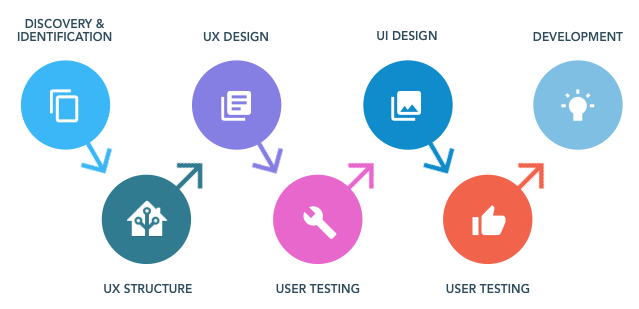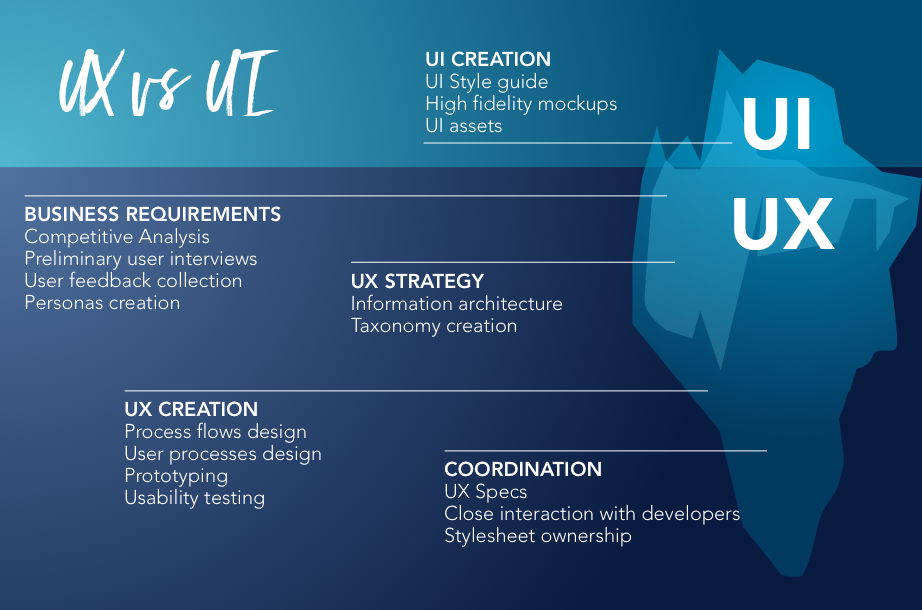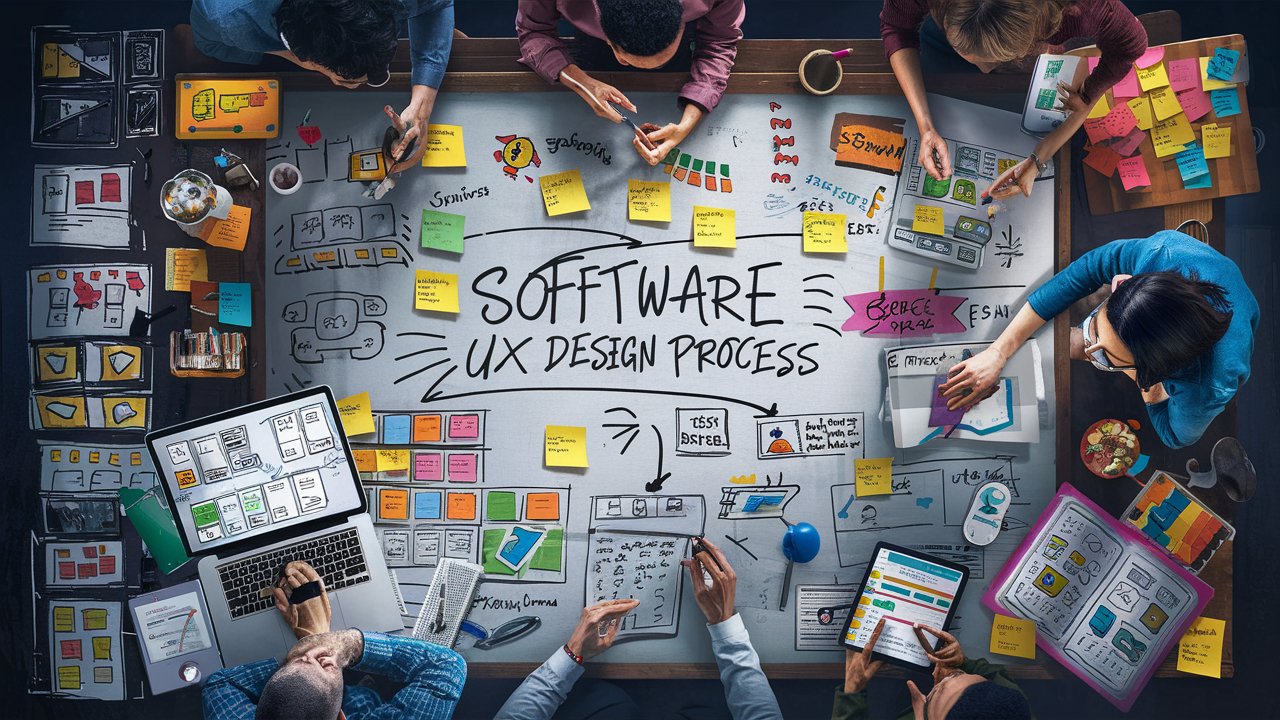
THE DISCOVERY
The very first step in any project is to understand the main product business goals. What kind of problems is this product trying to solve? Who is the client? What are any possible technical constraints?
Collecting necessary business requirements and all related data helps me identify the best solution.
At this step, I need to envision the whole product flow, including all functionalities that could be included in the final product. Even if the nearest release product scope doesn’t include all planned functionalities, it’s important to keep in mind the big picture so there are no surprises later.
Deliverables at this stage include product and business goals descriptions, a full product process flow chart, and a basic overall description of all intended functionalities.
IDENTIFICATION
Having identified the business goals, I can determine user goals. User goals support, but do not equal, business goals. Based on research results, it’s possible to start developing User Personas – main user groups that will represent the entire product audience.
The next step is to analyze existing business requirements and create an information architecture. Depending on the project, the content structure may be quite complex.
Deliverables: user goals and user personas descriptions, and information architecture in the form of a hierarchical chart with dependencies.
UX STRUCTURE
Once all necessary data is collected and the content is structured, I start creating user process flows (user experience structure). User flows are fairly detailed flowcharts that illustrate how users navigate micro-processes and achieve user goals at each step. At this step, we need to make sure that the logic is consistent across the whole application and the process is intuitive for users.
To support user flows, it’s important to have basic visual illustrations. This is where low and high fidelity wireframes come in. Wireframes are a necessary tool to identify the various screens needed to design the actual process. They also help envision what kind of UI elements could be needed at each step.
Depending on the size of the project, this is the stage where it might be possible to create some simple prototypes and start user testing.
Deliverables here will be low/high fidelity wireframes and possibly simple low fidelity prototypes.
UX PROCESS AS PART OF DEVELOPMENT AND ROLES

UI DESIGN
It is often necessary to start testing as early in the project as possible because, before the first testing, it’s very much a guessing game. We can guess to a certain extent, but to be able to have assurance and ultimately create the best product that meets all business goals, user testing is crucial.
Testing will help identify the efficacy of already prototyped or wireframed products and determine possible areas for improvement.
Once initial testing is done, we can move to creating high fidelity mockups and prototypes.
UI design will cover all aspects of the visual part of the application. It has a direct correlation with brand identity. If that doesn’t yet exist, it needs to be created and once again tested. Once this task is complete, the UI design process is about how to apply existing guidelines and use them efficiently to support user goals and user flows.
Carefully crafted high fidelity mockups must fully represent the look of the end product and leave absolutely no room for inquiry on all user steps and various scenarios. Here, visual guidelines and elements are applied to wireframes and modified until the desired aesthetic is achieved.
Final deliverables are high fidelity prototypes that illustrate complete product flow and a UI kit. The UI kit includes interactive and graphic elements, symbols, colors, patterns, images, and technical specs for sizing, dependencies, and elements interaction.
USER TESTING
I believe that product testing must be an ongoing process. Only valid user response can help us identify errors at early stages, which will ultimately help us save time and effort in the future. The bigger the application is, the more important and frequent the testing should be.





No responses yet